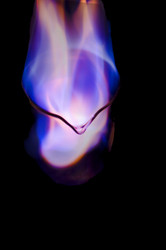Making fuel cells more attractive
Fuel cells are a clean form of energy, with numerous potential applications. Mostly operating at low temperatures, polymer electrolyte membrane FCs (PEMFCs) are essentially batteries producing electricity often from stored hydrogen fuel and oxygen from the air. However, issues associated with transporting and storing hydrogen fuel have made alcohol a promising alternative. Alcohol's high-energy density and relative ease of conversion into hydrogen have spawned research into on-board reforming. However, low-temperature PEMFCs are sensitive to carbon monoxide (CO) impurities of the reformate, making an additional fuel-processing step necessary. Scientists initiated the EU-funded project 'Development of an internal reforming alcohol high temperature PEM fuel cell stack' (IRAFC)(opens in new window) to develop a compact FC system that reuses heat produced by the FC to drive the alcohol reforming reaction without an additional fuel processor. At high temperatures, alcohol is reformed to produce CO-free hydrogen. The project goal required integration of a reforming catalyst and high-temperature membrane electrode assembly (MEA) operating at 190–220 degrees Celsius. New polymer membranes based on aromatic polyethers were successfully tested for 700 hours, showing improved thermal and chemical stability at 220 degrees Celsius. The newly developed alcohol reforming catalysts could effectively operate for 500 hours, providing stable hydrogen to the anode, while showing a small decline in their activity. Furthermore, high-temperature composite bipolar plate materials were produced. To ensure optimal methanol conversion, researchers studied various plate geometries. The main components — reformers, MEAs, bipolar plates and peripherals — of the IRAFC unit were prepared and system integration was successfully realised. A single cell of a high-temperature PEMFC incorporating a doped copolymer and a methanol reforming catalyst in the anode demonstrated the functionality of the unit. IRAFC used low-cost materials (electrolytes, catalysts and bipolar plates) and production techniques, thus allowing easier penetration of the FC system in the energy market. Project dissemination activities included the project website, publications in peer-reviewed journals and conferences. In addition, IRAFC has filed a patent application.







